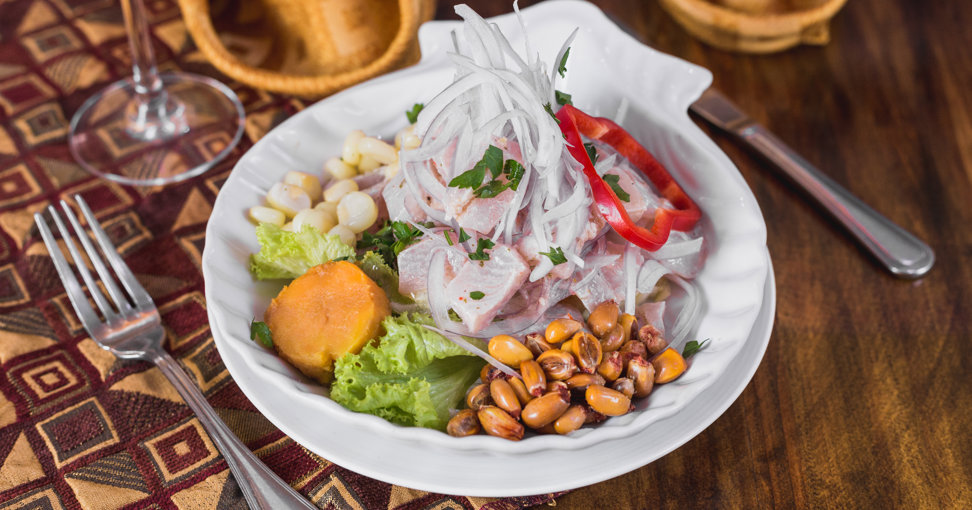Peruvian cuisine: evolution, international influences, and global recognition

La influencia de culturas en la cocina peruana: Un mestizaje gastronómico
La cocina peruana es un reflejo de la riqueza cultural y la historia del país, marcada por un mestizaje que incluye influencias españolas, francesas, italianas, africanas, chinas y japonesas. Sus raíces se remontan a más de 14,000 años atrás, cuando los antiguos habitantes de la región central de los Andes comenzaron la domesticación de plantas y animales, sentando las bases de la agricultura y la alimentación en el territorio peruano.
Los primeros cultivos y domesticación en el Perú antiguo
Durante el periodo Lítico (aproximadamente entre 10,000 y 5,000 años a.C.), se consolidó el cultivo de alimentos fundamentales como la papa, maíz y quinua. La cultura Tiahuanaco, asentada en la meseta del Collao, a 21 km del lago Titicaca, utilizaba estos cultivos entre los siglos I y X d.C. Actualmente, el Perú es uno de los centros genéticos más importantes del mundo, con una gran diversidad de papas, tomates (alrededor de 15 variedades), ajíes (cinco tipos principales), frutas, plantas medicinales y ornamentales. Además, sus habitantes domesticaron llamas, alpacas y cuyes, complementando su dieta con tubérculos, pescado y mariscos.
La llegada de la cocina española y su influencia
El mestizaje culinario peruano se intensificó con la llegada de los españoles en el siglo XVI. La cocina española, influenciada previamente por tradiciones árabes, bizantinas y persas, introdujo nuevas especias, legumbres y frutas a América. En Perú, España aportó nuevas técnicas de cocción y productos como el ganado vacuno, que revolucionaron la dieta local.
La influencia francesa y la innovación en la panadería
Con la llegada de los Borbones a España en el siglo XIX, la influencia francesa se dejó sentir en la gastronomía peruana. Uno de los aportes más destacados fue la introducción de técnicas avanzadas para la preparación de pan, resultado de la invención de hornos a vapor. En el Perú colonial, entre 1791 y 1795, el periódico El Mercurio Peruano publicó los primeros escritos sobre gastronomía, destacando la fusión entre alimentos españoles y peruanos.
La migración italiana y sus contribuciones
Entre 1840 y 1880, Lima recibió una significativa migración italiana, especialmente de la región de Liguria y Génova. Estos inmigrantes se dedicaron mayormente a la agricultura y dejaron legados culinarios importantes. Destacan el cultivo de la uva Italia, base para la elaboración del Pisco Italia, y la introducción de los fideos, que rápidamente ganaron popularidad. Para 1878, los italianos eran dueños de las doce fábricas de fideos existentes en Lima. También impulsaron la popularidad del pan dulce llamado “panetón de Milán” y, en 1897, abrieron la primera fábrica de helados, alimentos hasta entonces desconocidos en Perú.
La influencia africana y china en la cocina peruana
Tras la abolición de la esclavitud en 1854, la población afroperuana jugó un rol fundamental en la preservación y difusión de dulces tradicionales peruanos. Para suplir la mano de obra, entre 1840 y 1874, llegaron al Perú alrededor de 90,000 inmigrantes chinos, quienes se asentaron principalmente en la calle Capón de Lima, donde abrieron los primeros chifas o restaurantes chinos.
La comida china se fusionó con la gastronomía peruana dando origen a platos emblemáticos como el lomo saltado, que combina técnicas chinas con ingredientes peruanos, además del uso masivo del arroz. Actualmente, los chifas siguen siendo un elemento fundamental en la cocina popular limeña, y en los mercados se venden verduras chinas cultivadas en Perú.
La influencia japonesa y la cocina Nikkei
La llegada de migrantes japoneses en 1889 marcó otro capítulo en la evolución culinaria del Perú. La fusión de platos peruanos con ingredientes y técnicas japonesas dio origen a la cocina nikkei, que combina sabores y productos de ambas culturas. En Lima existen restaurantes japoneses tradicionales, donde se preparan platos como sushi y sukiyaki, y también restaurantes nikkei, que presentan creaciones fusionadas utilizando ingredientes peruanos y japoneses.
A partir de la década de 1960, con las visitas de hijos y nietos de migrantes a Japón, se produjo una unificación gastronómica que incorporó ingredientes peruanos tradicionales como el limón, rocoto, ajos, ají amarillo, ají panca y ají limo. Esta fusión dio lugar a una cocina creativa y única, que ha puesto a Perú en el mapa gastronómico mundial.
Celebrando la diversidad culinaria del Perú
La cocina peruana es, sin duda, un vibrante mosaico cultural que refleja siglos de historia y mestizaje. La fusión de tradiciones ancestrales con las influencias españolas, europeas, africanas y asiáticas ha dado origen a una gastronomía única, rica en sabores, técnicas y productos. Este mestizaje no solo celebra la diversidad cultural del Perú, sino que también posiciona su cocina como una de las más creativas y reconocidas a nivel mundial, invitando a propios y extranjeros a descubrir y disfrutar su sabor incomparable.
FUENTES
Libro: Cocina Peruana: Historia, Cultura y Sabores, Autor: Sara Beatriz Guardia, USMP
Foto: Restaurante Central, durante nuestra visita en Diciembre del 2024.